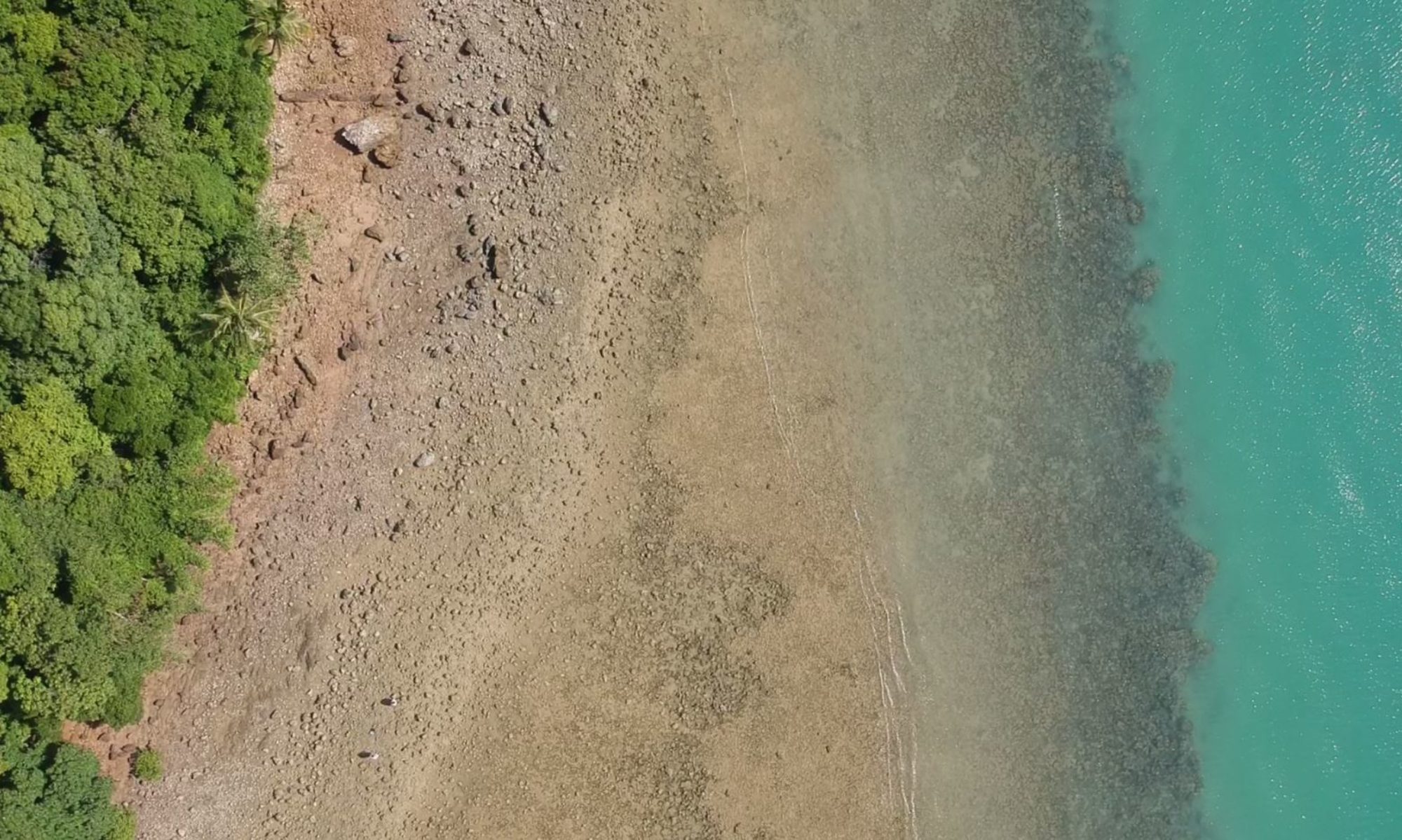Project by Anna Carreras. BAU Design College of Barcelona, Spain.

Rainforests of Panama are some of the world’s most biologically diverse areas. Animals use camouflage tactics to blend in with their surroundings, to disguise their appearance. They mask their location, identity, and movement to avoid predators.
By the other hand in cities in many countries the increased use of surveillance technologies have become part of the public and private landscape. Citizens lack of camouflage tactics to avoid these forms of elevated vigilance. Can we learn and borrow tactics from animals to keep away from this constant monitoring?
The froggy camouflage handheld fans project proposes a playful way to act upon our surveying world while learning from frogs camouflage in Gamboa rainforest, Panama.
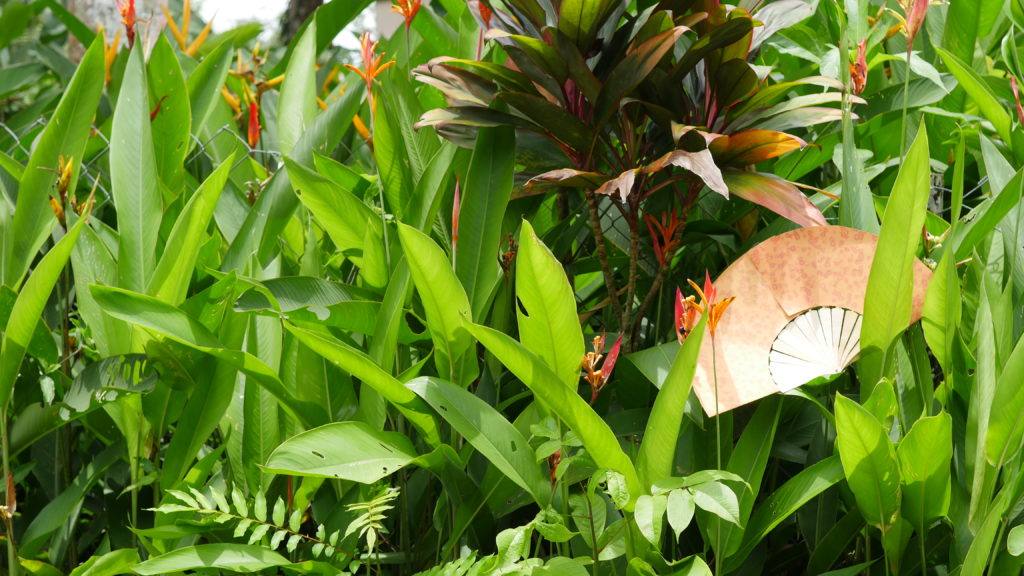
Nature in Gamboa
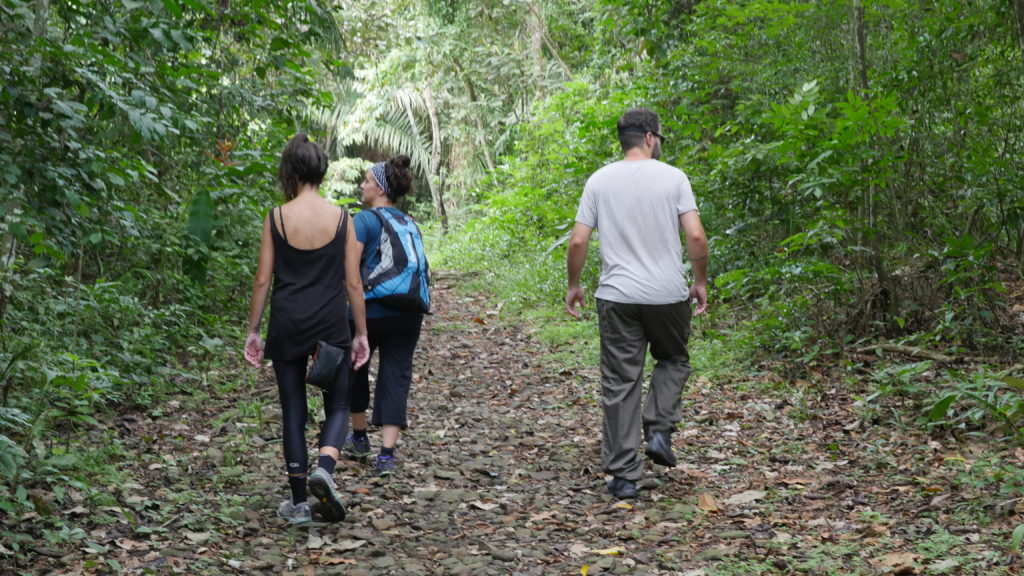
Attending the Digital Naturalism Conference (Dinacon) from August 26th to September 1st offered the possibility to do several exploratory walks around Adopta un Bosque station, La Laguna trail in Gamboa and Pipeline road on the border of the Soberania National Park. Animal watching includes birds (thank you Jorge), frogs, mammals and several butterflies and insects.

A species’ camouflage depends on the physical characteristics of the organism, the behavior of the specie and is influenced by the behavior of its predators. Background matching is perhaps the most common camouflage tactic and animals using this tactic are difficult to spot and study. Another camouflage tactic is disruptive coloration that causes predators to misidentify what they are looking at. Other species use coloration tactics that highlight rather than hide their identity. Warning coloration makes predators aware of the organism’s toxic or dangerous characteristics. This type of camouflage is called aposematism or warning coloration.
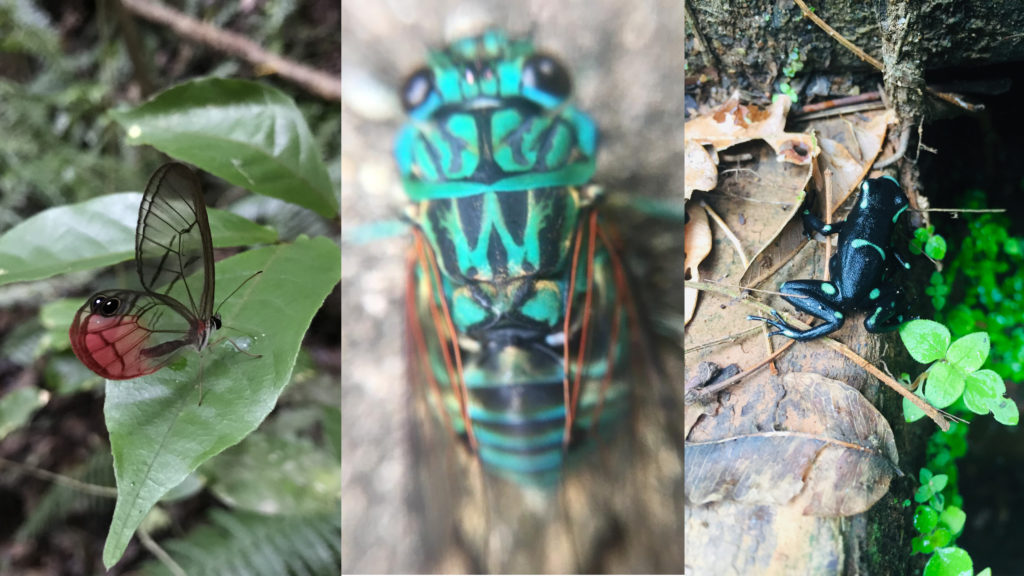
Studding camouflage tactics includes animal observation and some readings. Frogs are easier to spot and photograph in Gamboa than insects or snakes. The animal books at Adopta un Bosque station and Dinalab gave the opportunity to classify the different species and gain some knowledge about their colors and skin patterns.
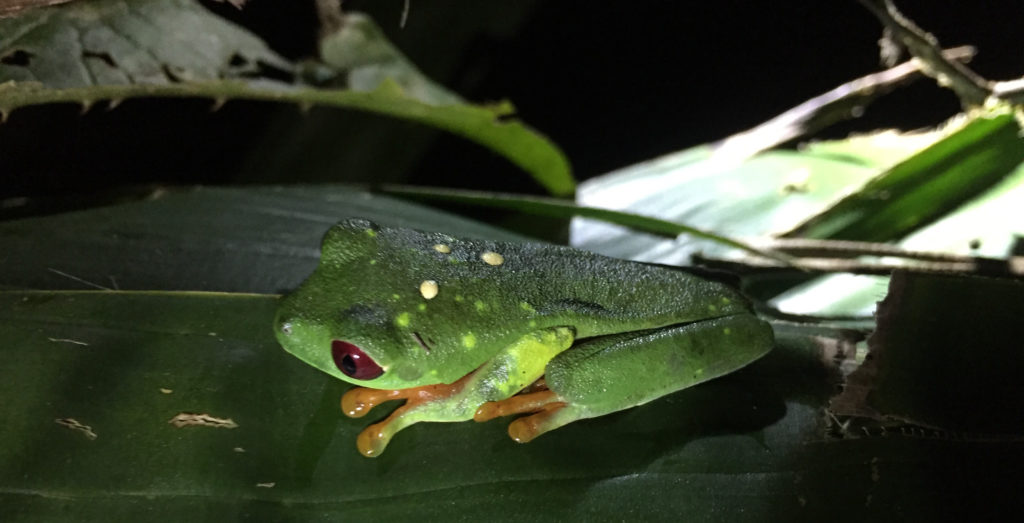



Patterns

The skin of some animals show a self-ordered spatial pattern formation. Cell growing and coloration creates some order resulting from the specific differentiation of cell groups. In such complex systems cells are only in contact with their closest neighbors. Which are this morphogenesis mechanisms where some order emerges from individual cells? Which are the mathematical models we can use to achieve this kind of growing patterns and gain some knowledge about them? Can we simulate some frog’s skin visible regularities with a coded system?
The mathematician Alan Turing predicted the mechanisms which give rise to patterns of spots and stripes. The model is quite simple, it places cells in a row that only interact with their adjacent cells. Each cell synthesizes two different types of molecules. And this molecules can diffuse passively to the adjacent cells. The diffusion process makes the system and the whole result more homogeneous. It tends to destroy any ordered structure. Nevertheless the diffusion process with some interaction by the cell molecules drives to macroscopic ordered structures. The mechanism is called reaction–diffusion system. It drives the emergence of order in a chaotic dynamic system.



Code and interface

A system using the Gray-Scott model and formulas was coded in Processing language. The interface shows the animation of how a frog skin evolves. The GUI also shows the system values that lead to that skin pattern formation. These values and two selected colors generate a unique frog pattern each time the system is started. The spatial feeding system options and the values that can be selected and adjusted are inspired by Gamboa’s frogs. They derive from the observed and photographed species and from the consulted books.
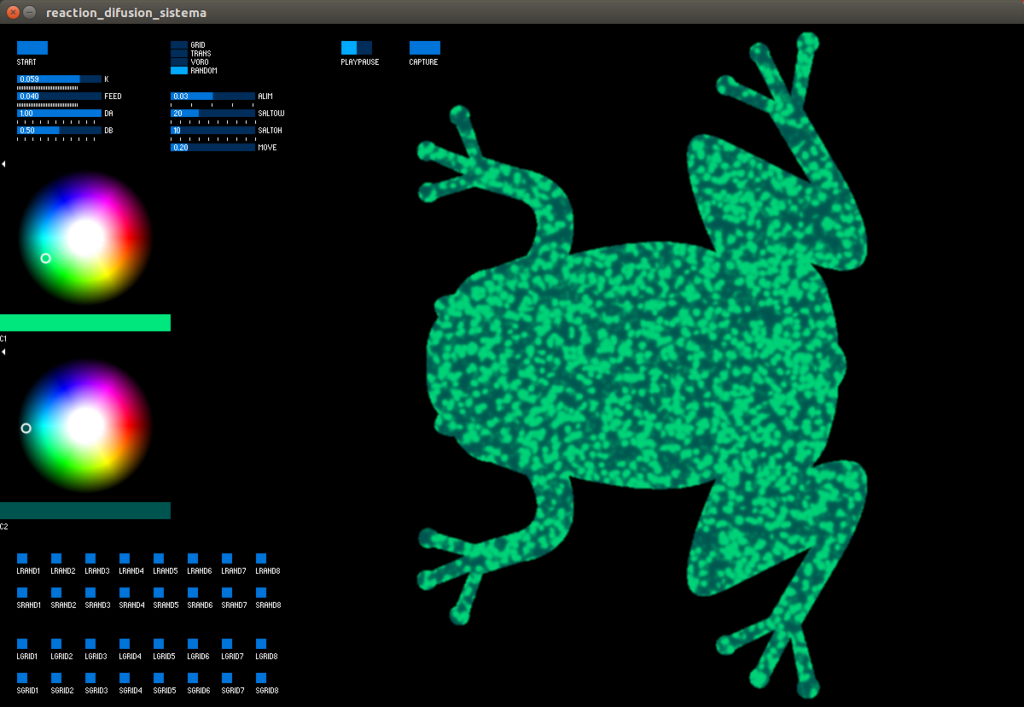
Camouflage DIY hand fans

Frog skin images are used to create light folding hand fans. They are suitable for Gamboa’s hot weather and help to camouflage inside the rainforest. They can easily be taken home and used around the world in several cities.
To build the hand fans two parts are needed: the fan frame and the fan leaf. The designed DIY hand fan is designed as a traditional Spanish hand fan. The frame structure is made of a thin material that can be waved back-and-forth, birch tree or pear tree wood.

The produced hand fans use 0.8mm thick birch wood to make sure it can bend without breaking. The fabrication starts laser cutting the 16 fan ribs for the frame and printing the camouflage image. Cut the fan leaf, using scissors, as a half circle measuring 210mm the exterior radius and 95mm the inner radius.
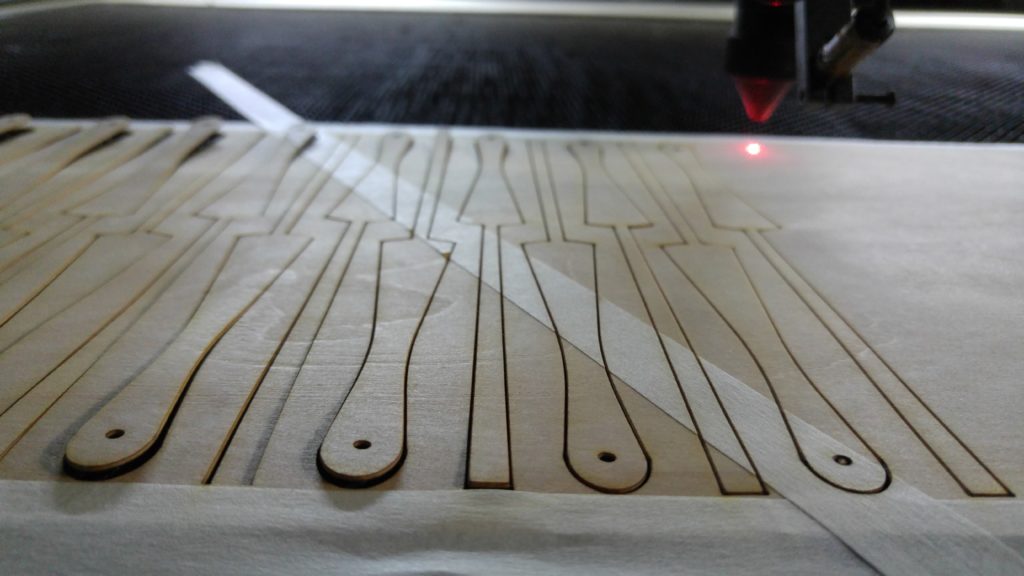
When the parts are ready put together the 16 fan ribs, one wide rib at the beginning and one at the end. Fix the fan ribs with a m3 screw and nut, a metric screw with nominal diameter of 3mm or 0.12in. Extend the fan ribs as an opened hand fan. Glue the fan leaf on the thiner exterior part of each rib and allow the glue to dry. Finally, one rib at a time, put it above the previous ones and fold the paper carefully to create the folding shape.


Results

Two different models of the Froggy camouflage handheld fans were created. The green one is inspired by the glass frogs and the orange fan is inspired by the pumilio dart frog. Both frogs live in Panama.
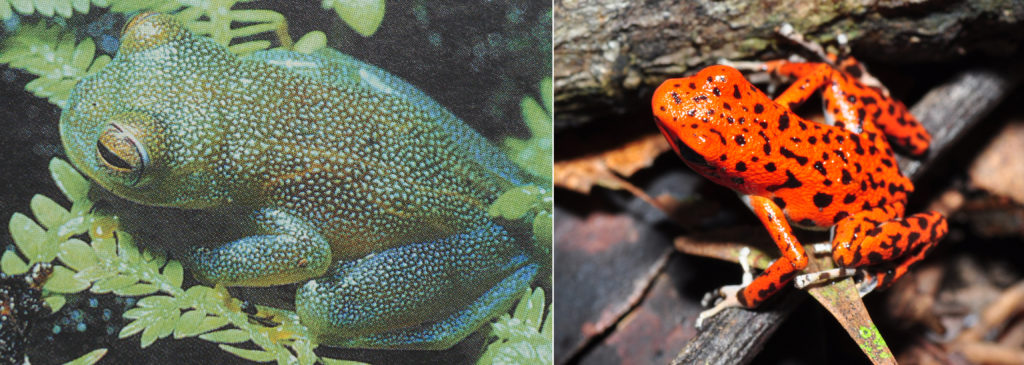

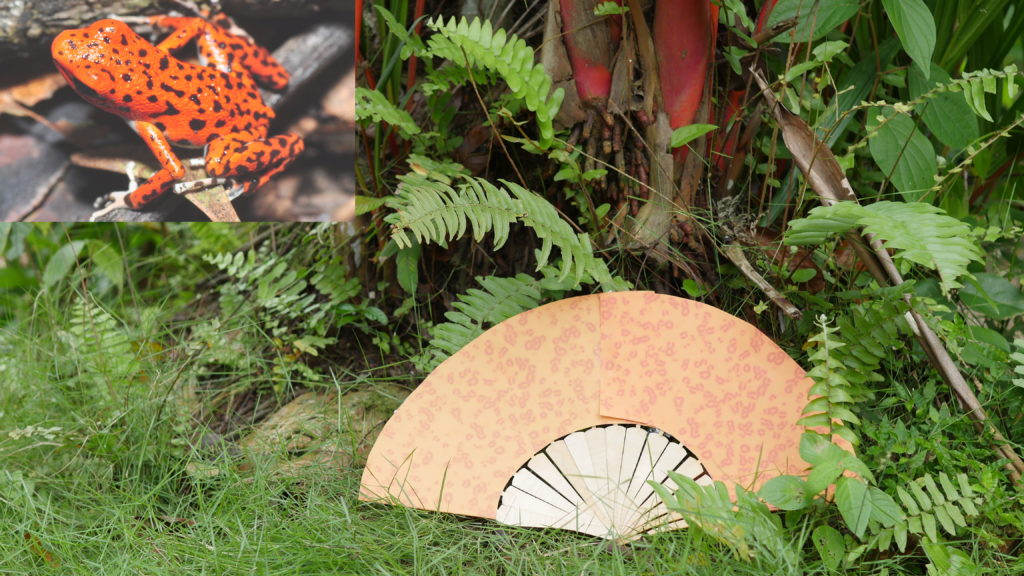
The glass frog handheld fan and the pumilio dart frog handheld fan integrated quite well with Gamboa’s surroundings and the rainforest.
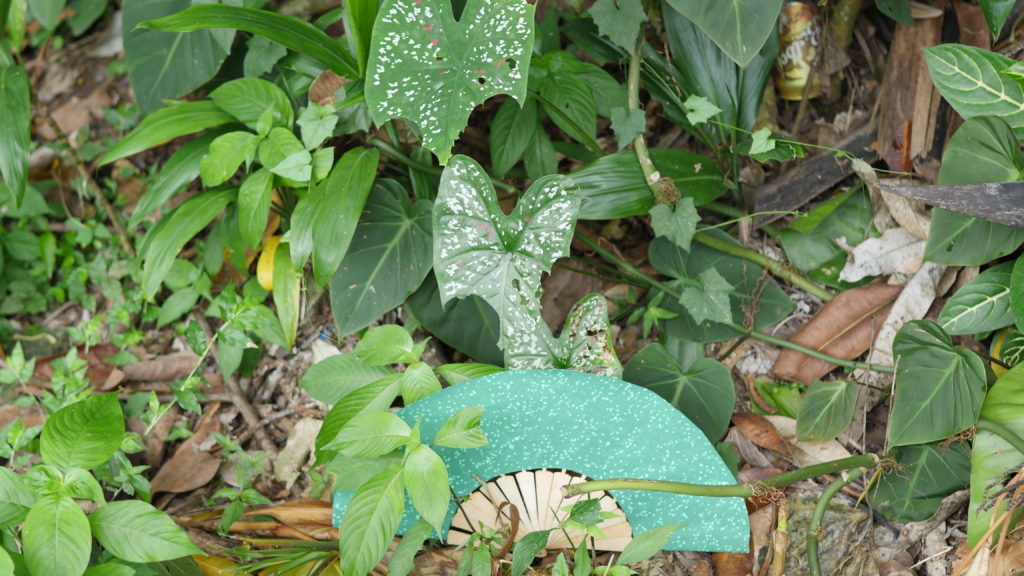
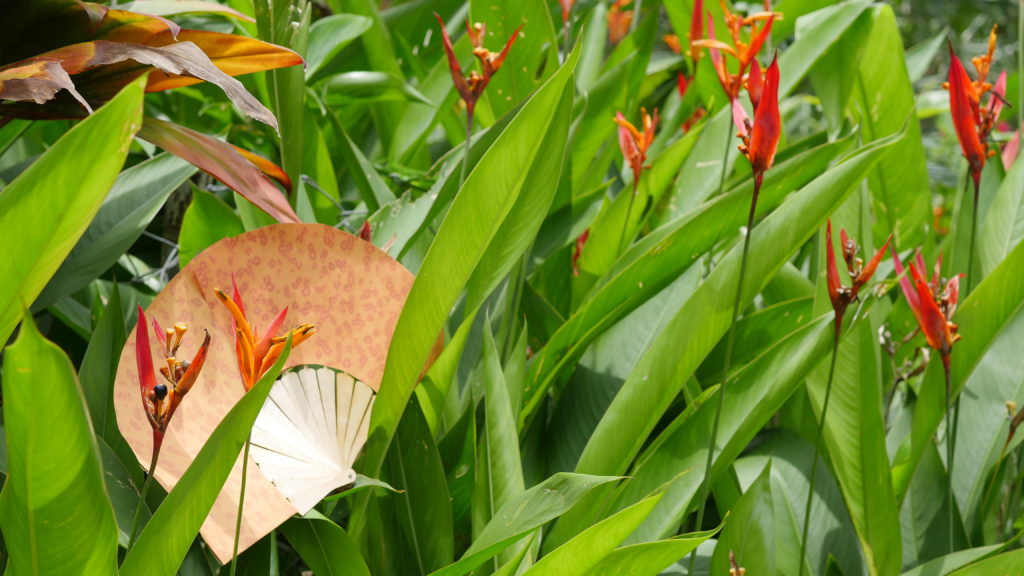

Conclusions and future work
To act upon our surveying world camouflage is one of the plans we can play. It rises issues of mimesis, crypsis, perception, privacy and identity. Some artistic projects about fashion and cosmetics have been developed with this idea, like CV Dazzle and HyperFace, among others. The Froggy camouflage handheld fans project sums up in this direction creating hand fans inspired by Panama’s frogs camouflage strategies.
We can gain some knowledge and learn from animals and their hiding techniques. Some animal camouflage skin coloration can be modeled as a quite simple dynamic system that generates complex ordered patterns. We can mathematically model and code the system to simulate the growing process of frogs skin coloration. It helps us to better understand how different frog species have certain particular patterns. Moreover it gives us some insight about how order can emerge from random initial conditions.
Different animal patterns and camouflage tactics can be further investigated. It can help us to achieve different and diverse algorithms and colored results. They can suit in different environments and they can help us camouflage from the increasing number of surveillance systems. A battle between algorithms learned and borrowed from nature against vigilance algorithms.
Exhibition
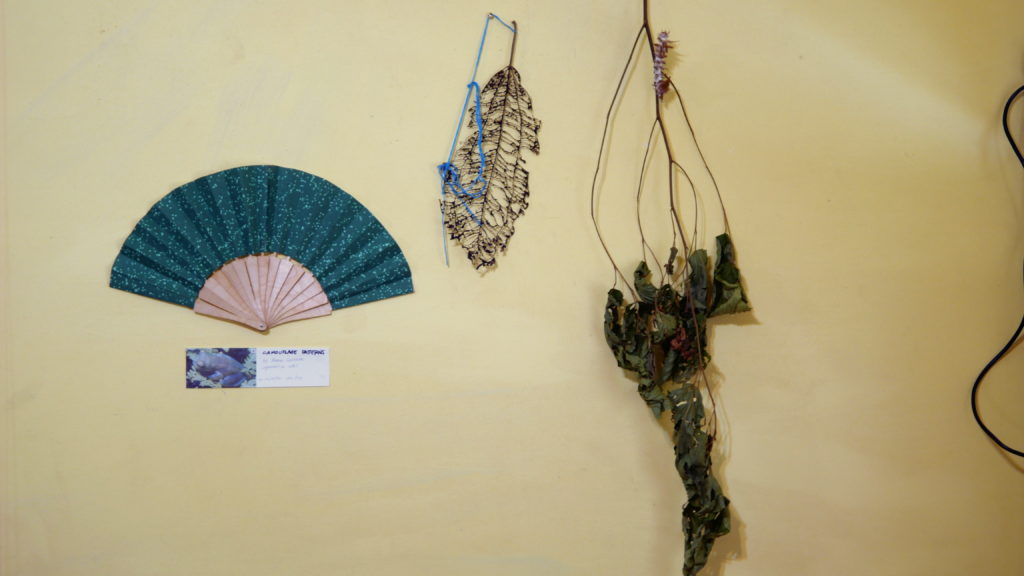
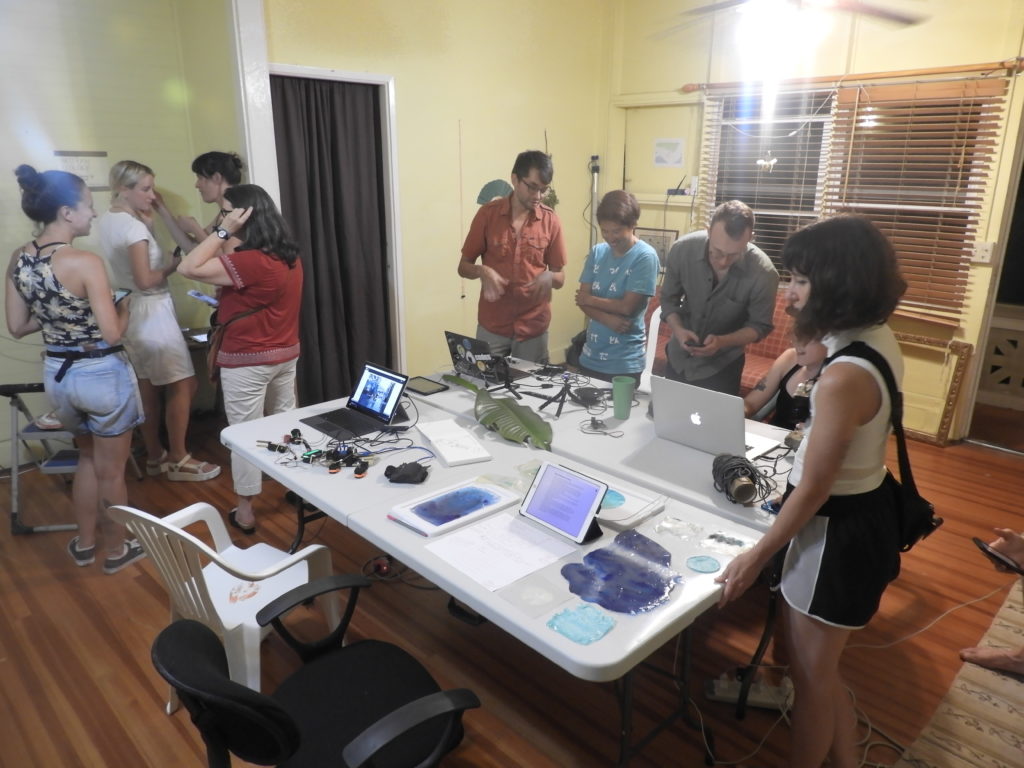
Acknowledgments
First I would like to thank Dr. Andrew Quitmeyer for organizing the event and all the participants I met at Dinacon Gamboa. And thanks to Marta, Mónica, Tomás, Jorge, Päivi and Dani to help me documenting the work.
References
Book The Chemical Basis of Morphogenesis. Alan Turing. 1952.
Book Orden y Caos en Sistemas Complejos. Ricard V. Solé, Susanna C. Manrubia. 2000.
Videotutorial Coding challenge #13: Reaction Diffusion Algorithm in p5.js. Daniel Shiffman. 2016.
Project CV Dazzle: Camouflage from face detection. 2010.
Project HyperFace: False-Face Camouflage. 2017.
